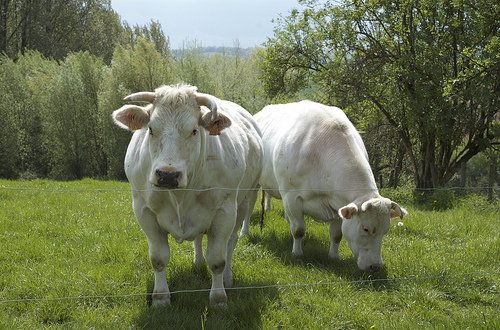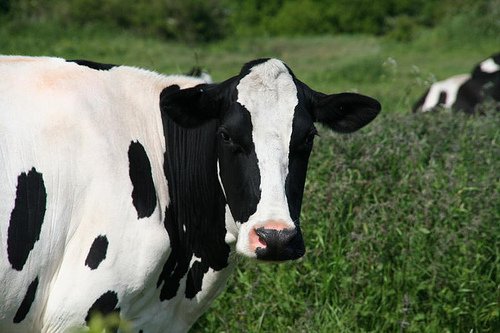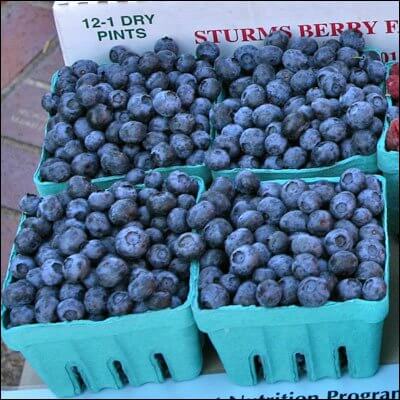Grass-Fed Meats
Buying meat at the store can be quite confusing. On top of having to choose a proper cut of meat to suit your needs, there are many grade labels that may add to the confusion: organic, prime, choice, select, etc. However, there is one term I would like to highly encourage you to pay attention to when buying meat: grass-fed.
What is Grass-Fed Meat?
Grass-fed meat is actually a traditional food, and it is exactly what it sounds like. It is the meat from an animal that has been fed grass. This term is used especially when describing beef. (While I will be focusing on describing beef, please note that in essence, these descriptions can apply to other meat sources as well.) Now, you may be wondering why there needs to be this distinction since we’ve been taught from childhood that cows eat grass.
What a Modern Cow Eats
Despite what you were taught in kindergarten, most cattle do not graze happily on green pastures. The reality is that with modern “farming” practices and the desire to produce large quantities of meat quickly and cheaply with the highest profit, some major changes have occurred in the average cow’s diet—much to the detriment of the health of the cow and you!
Let me walk you through the average life of that piece of meat you see at the grocery store.
When a calf is born, it spends its early days nursing on pastures with its mother. Once it is weaned, it is usually penned and fed hay and grains.
But when a meat cow is old enough, it is ready to be taken to the feedlot. You know those places—you can smell them from miles away! At the feedlot, hundreds or thousands of heads of cattle are pushed together into small living quarters to spend their rest of their living in squalor, eating grain and slop.
Because God created a cow’s rumen to handle grass but not the grains and corn that it is fed, infection and bloat usually sets in. The goal of the feedlot is to fatten the cow as quickly as possible before infection sets in and the cow dies. Because of this, cows are fed a cocktail of growth hormones and antibiotics until they are finally sent to slaughter.
The Grass-Fed Cow
Early life for the grass-fed cow is similar to the modern cow. It spends its days with its mother, nursing and wandering about the grass.
As the cow matures, however, it still has access to forage in the grass as it pleases. A grass-fed cow is never sent to be fattened at the feed-lot. It just keeps on eating grass and bugs until it is ready to be slaughtered.
Because a grass-fed cow has never been rapidly fattened, the result is a much leaner cow. And because it has not had to live in very cramped quarters with other cows, it has not been pumped with antibiotics.
You may be wondering why grass-fed meat seems so much more expensive than conventional meats. That is because it takes so much longer to fatten a grass-fed cow, and the result is a cow that produces less meat at slaughter.

Photo credit: creight0n
Average Grocery Store Meat
The rapid fattening of the cows at the feedlot results in a meat that is highly marbled with fat. Ironically, meat with more marbling is generally considered higher quality by our culture, and is thus more expensive.
The resulting meat is also high in saturated fats, as well as growth hormones that can wreak havoc on our endocrine systems. Much heart disease is thought to be caused by these unnaturally fatten cows and their hormones.
(Note: I’m sure a lot of you are also concerned about the treatment of these animals. I am as well. While writing this, I have chosen to focus on the actual meat though, since discussing animal treatment is a completely different subject to be saved for another day.)
Grass Fed Meat
On the flip side, there are many benefits to eating grass-fed meats. Here are just a few:
- The meat is “clean” and not full of hormones or antibiotics.
- Grass fed meat is much leaner—even leaner than most chicken.
- The little fat that is on the meat is full of beneficial Omega 3 fatty acids.
- The meat is less likely to carry diseases such as E. coli or mad cow disease.
How to Cook the Meat
Finding grass-fed meats is pretty easy. It seems that you can find at least one grass-fed option at the grocery store, and at the health food stores you may find many more options. My family loves to eat grass-fed beef, but since we live in the heart of Oklahoma, we also eat a lot of grass-fed buffalo that is readily available at the stores here.
While buying grass-fed meats may be simple, cooking it may not be. Actually, cooking grass-fed meats is easy, but finding quality recipes that instruct on how to handle the unique leanness of the meat are quite rare. Afterall, most mainstream recipe books teach us to value the extra fat in the meats, and also reflect the desire to cook as quickly as possible. But with lean meat, there just can be no shortcuts. Cooking slowly on lower heat is the key to keeping the meat juicy.
I learned this the hard way. After I read through Nourishing Traditions a few years ago, I was eager to start buying grass-fed meats. I came home and cooked it, and much to my dismay, the result was much like chewing on gum. We had to keep chewing, chewing chewing….
Nourishing Traditions has many recipes for handling the grass-fed meats properly. There are also many grass-fed cookbooks out there to help with proper cooking techniques.
Recommendations
If you would like to know more about the whole process of how cows are raised and the difference between feedlot and grass-fed cattle, I have a couple of recommendations.
The hands-down best resource I’ve found is the book The Omnivore’s Dilemma: A Natural History of Four Meals by Michael Pollan. I will start by saying that I definitely do not agree with everything in his book. However, it provides an extremely thorough look into the meat industry. I will just say that my eating will never be the same after having read that book!
Also, I already said this, but Nourishing Traditions by Sally Fallon is a wonderful handbook for preparing meats properly.
Related Posts
How to Find Local Sources of Meat
Making the Best of the Regular Grocery Store: Eggs, Meat and Poultry
Help Me Out: Grass-Fed Steaks {This was a cry for help that I (Stephanie) put out a couple of years ago. I completely agree with Beth about learning to cook grass-fed meat differently, and I was really struggling with tough, inedible steaks. There are a lot of helpful readers comments. I have since learned that marinating (esp. with something acidic to begin to pre-digest the meat, like raw apple cider vinegar or buttermilk) helps a LOT}






We eat only grassfed meats now. Well, I should say, that is all we buy. We are always happy to eat whatever we are served when we are guests in someone’s home, and when we eat out we do the best we can.
I don’t find it that different to prepare. Chicken seems to be more finicky than beef. I cook my chickens slow at low heat, and I do a lot of braising chicken breast meat in broth and sauces. We eat a lot of hamburgers, and I add a couple egg yolks and some worcestershire sauce and sometimes breadcrumbs to make them easier to patty. I definitely could use help on preparing the steaks. I have Nourishing Traditions. I’ll take a peek and see what I find. 🙂
Thanks for this great information!
@Musings of a Housewife, I didn’t realize that anyone else had a hard time with pastured chickens. We got a whole bunch of the most fully-pastured chickens we’ve ever been able to buy last year, and we definitely found them tougher and not as moist. I wonder if others have had that experience?
@Stephanie @ Keeper of the Home, I’ve definitely found that pastured chickens are tougher, but I think it is something you get used to after a while. I really could use help with steak, too, though! We usually eat our beef ground, so that’s no big deal. But steaks are sure tough! What to do? Pound them?
I have only eaten grassfed for several years now and I wrote why here (http://extraordinaryordinarylife.blogspot.com/2011/02/why-i-buy-grassfed-beef.html) and what to do with all the different cuts here (http://extraordinaryordinarylife.blogspot.com/2011/03/what-to-do-with-quarter-of-cow.html). Thanks for sharing! We love our grassfed beef here. There is just NO comparison to store bought beef.
Sadly, that actually confirms the main reason we haven’t been able to switch to grass-fed meats yet. My husband and I are both “steak connoisseurs” (at least according to our friends and family). We buy and eat a lot of steak and absolutely love the steaks with a high marble fat! I’ve just been reading and getting into more traditional foods, and this is definitely the one area we really struggle to decide what to do. We don’t want to cut out steaks altogether, but we just can’t eat the extra lean, not nearly as tender (even when cooked well) steaks that most grass-fed cows produce. So we’ve just kept the conventional ones in our diet. I know that’s not the best option, and would love to learn that someone out there knows how to fatten their cows better while letting them eat what they were meant to eat. It just seems like a lose/lose situation to us.
@Megan,
Good grass fed beef is just as marbled as “regular”. There is a difference between marbling and the “back fat” that is added by graining. Good Grass fed meat should not be “chewy.”
Look for jersey meat for good inter muscular fat. Winter killed meat is better, summer killed meat is high in unsaturated fat and can have a “fishy” flavor to the fat.
@Megan,
We have raised our own beef for some time, we have been raising it “grass-fed” for 8 years now. When we have our grass-fed meat butchered, we always have them leave extra fat on the steaks and other cuts. We believe in the Nourshing Traditions that you should have plenty of animal fat in your diet. Even if that is not done, there is still marbling. Cook the grass-fed steaks a bit slower and at a lower temp. and they will melt in your mouth.
Remember that not all grass-fed beef is equal quality. Even if the beef is being raised organically and with forages, that does not mean that it is good quality. We produce and buy only the best forages for our animals. Our beef melts in your mouth, it is so tender and good. But we know a family that produces the same thing but the meat is tough and not great tasting. They feed organically, but the cheapest and poorest of quality forages with a lot of junk weeds. Your meat is only as good as the forages (grasses) that it eats.
@Amy P., That’s really interesting, Amy. We have definitely had grass-fed beef that was amazing, and some that has just been really tough and disappointing.
@Megan, I get that, Megan. My husband has a really hard time with grass-fed steaks as well. We do get some steaks with our sides of beef, but we usually just end up using them in the crockpot or for stir-fries or the like, since we don’t find them nearly as nice as conventional marbled steaks. The couple of times a year that he truly wants an amazing steak, we buy a conventional one, and the other 99% of the time we stick with our grass-fed. It keeps my man happier and it’s a small compromise for us. But, I was interested to read what another commenter (Amy P) said about the quality and tenderness of the grass-fed meat based on exactly what type of forage it is fed. That’s motivated me to further look into what’s available to me locally and see if I can find a source of really tender, grass-fed steaks for the hubs.
I’m beginning the switch to grass fed ever since I saw Food Inc. This film explains alot about the difference. I had no idea that when you feed the cows corn (they aren’t created to handle corn) that their bodies produce a new substance that wasn’t there before but becomes part of the process of digesting corn. That substance is E-coli and it’s bad for the cow and when the cows feces get into the environment its makes us sick when we eat, say, spinach growing nearby. Also, whether you like it or not, this feces gets into the meat as it’s being processed, so in order to get the meat to be safe for consumption and kill the E-coli in it, the processing plants now incorporate ammonia in our meat from cows that are not grass fed.
In addition to this, the film shows how the farmers are treated by these different companies and it’s just wrong. In order to continue working with the big corporations the farmers are forced to build huge facilities that they have to take out loans for. The average chicken farmer takes out $250- 500,000 worth of loans in their lives in order to not have their contracts terminated by the big businesses just so they can have thier income….and the average farmer only gets paid $18,000 per year by the companies that are sucking them dry.
I researched our community and found this web page for Full Quiver Farm.
http://www.fullquiverfarm.com/
It’s a farm run by a family of 11! The family pays their bills by selling clean meat and everyone in the family participates. After seeing this website the decision comes down to this for me. Money is power. Do I want to use what little power I have to support this beautiful family and others like it, or do I want to use my power to grow the companies that are hurting families like this with their greed. The decision seems clear…and yes, I realize I will have to give up some things to do it, but, like the bible says- you have to lose your life to find it.
Also check out, Food Matters. Both available on instant view on Netflix.
We just ordered 1/2 a grass-fed cow from a local farm here in central IN last week. It will be butchered in the fall and the farmer invited us to come to the farm and look at our cow if we would like. I thought that was very nice. I’m so excited to finally be able to afford grass-fed beef, as a single pound of grass-fed hamburger in the store costs $5 a pound. I have Nourishing Traditions, so I’ll have to check out some of the recipes in that. However, we did buy a side of beef a few years ago from a local farmer and noticed that it was SOOO much better than anything we’d ever bought from a store. I didn’t have to cook it any differently, but I’m not sure if it was 100% grass-fed or not. Anyway, I’m excited at the prospect of feeding my family beef I feel really good about!
It should be noted that feedlot cattle aren’t fed “slop” in the way we think of feeding pigs household leftovers. It’s a scientific formula of *just right* protein, fat, carbohydrates, vitamins, and minerals. That said, the protein is usually soy (with it’s whole host of problems) and sometimes even processing waste from chicken slaughter, etc. NOT cattle’s natural diet, at all. Their rumen bacteria have an amazing method of turning cellulose (which most of us can’t eat) into usable energy. Grains do offer much more energy per mouthful, but change the pH of the rumen, letting e.coli flourish all through the digestive tract (hence the routine antibiotics and now-resistant 0157H:7)
Also, a beef animal can eat other non-grass greens and still be what we’re looking for. Most places in north america cannot offer green pasture year round, and cattle need at least one winter to bring them to slaughter weight. Alfalfa is an appropriate protein that is still ‘green’ and not ‘grain.’
Lastly, I don’t have any first-hand knowledge of this, but the man I bought a grass-fed beef from a couple years ago had bred his herd of Angus to do really well on grass. While I’d been told by my grandpa that it would take 3 years to get a steer to butcher on pasture, this producer said his were ready in 16 months, well within the ‘standard’ range. I believe in addition to the pasture he offered a special mix of greens (as hay, I assume) any time the pasture was less than stellar. Rotational grazing is also an element.
I do recommend, as Pam above has done, to meet the producer if you can. I’m not sure what, if any, regulations are on the ‘grass-fed’ label (and I’m certainly not advocating for regulations), but even the article states that cattle start out on pasture until they’re weaned. Technically, even if they’re slaughtered at a feedlot, they WERE still “grass-fed” at one point. A less-than-honest marketer might be able to twist this improperly.
Another thought, in case anyone applies the grass-fed term to poultry… Chickens, anyway, are NOT ruminants, or even vegetarians. They are carrion eaters by nature, and need much more protein than some others (geese eat greens and seeds, ducks eat greens and protein, etc). “Pastured poultry” is great, because the birds are getting sunshine, bugs, greens AND a poultry ration. Vegetarian fed (even for eggs) is not natural for them and they wouldn’t be able to survive on ‘pasture’ alone.
[once, I even watched one of our hens kill and eat a small mouse. Ick!] 🙂
Thank you for this post! More people need to know both WHY, and HOW to do grass-fed beef!
Just a little clarification for those of us who live up here in Canada 🙂 Growth hormones are banned in our country and there are strict rules about the use of antibiotics (when they are used there is a certain amount of days before the animal can be used for anything….milking or meat). Personally, we buy our beef from a local farmer who does both (pastures his animals and feeds them grain). We love the quality of the meat and feel good about the life the animal leads. Something to remember if cross-border shopping…definitely different regulations with regards to dairy and meat. Love your blog by the way….always good to know we’re not alone in pursuing a healthy lifestyle. Thank you Stephanie!
@rp,
I do believe that hormones are used in beef cattle in Canada (an ear implant with a variety of hormones to chose from, depending on different factors, like age and gender). Dairy cows are not allowed rBGH (recombinant bovine growth hormone) as they are in the states, but there *are* synthetic hormones found in commercial milk (oxytocin, for example).
So while they’re not as widely used as they are in the US, it’s still important to know your source!
@Melanie,
I’m surprised to hear about the hormones used in beef cattle here, glad our local farmer does not use them. Also surprised that there are synthetic hormones found in commercial milk….how is this possible….I thought all growth hormones were banned? Would you mind sharing your source for this information….am interested in learning more. Thanks 🙂
@rp,
My sources are just from personal experience, I guess. But you can probably google either and find lots of information. I used to test milk at dairy farms, and oxytocin is commonly used, because often cows won’t let their milk down…and this does the trick, and makes sure they’re totally “empty” (and that they give a lot of milk, which makes the cow look better, especially when the tester is there!). It’s totally legal, even when the tester is there. It’s *not* a growth hormone, though, which is illegal in Canada.
The beef implants, I learned about through being involved in the farming community all of my life, and hearing about it countless times, and seeing them widely available in farm supply stores and catalogues. I also learned about it in a “meat science” course at university.
That’s all I have for you right now, I’m sure a quick google search can bring you lots of information, but if not, I can see what I can find.
@rp, Thanks Melanie….has been good “talking” with you!
@rp, Yes, it’s true that Canada is definitely stricter about guidelines for hormones and antibiotics. What matters more up here is finding out about the treatment and feeding and exercise the animal gets, since states about no hormones or antibiotics are essentially meaningless. We also buy from a local farm/deli where I can personally ask them questions about what they are doing.
We have some grass-fed beef at our grocery (Sprouts Farmers Market), and I’ve only been brave enough to try the ground beef. Is there a good way to cook it? I really have no idea what I’m doing, since I used to be pescatarian for about 6 years, and am just now learning how to cook meat (grass-fed or not!)
@Ina,
I was a vegetarian for 10 years, so i know what you mean when it comes to learning how to cook meat. One thing my hubby told me is that ground beef is REALLY hard to mess up. So start with that and learn different recipes. Instead of burgers, try skillet meals, taco meat or chili. Also, I make meatloaf cups instead of a whole meatloaf as it tends to stay juicy that way.
I just got 1/2 cow from a local farmer: 100% grass fed. I’m in paradise! My freezer is full of ground beef, bones, ribs, steaks, roasts…YUM. I’m about to do GAPS intro so I’ll be making tons of broth, soups and meats.
Ina, ground beef can just be sauteed with some fat and added to just about anything. I like to make it into simple patties: 1 lb or so beef, 1 egg, 3-4 cloves of garlic (minced or Microplane-d) and seasonings. Make into patties and saute. You could probably make the same mixture into small meatballs and cook in soup. HTH
We only eat Grass fed meats and pastured animals. I have fallen in LOVE with the Grassfed Gourmet. The cookbook is awesome, and we have yet to have a recipe that we don’t love!
We have been raising our own meat for some time. We have been raising it strictly “grass-fed” for about 8 years now. We have had plenty of experience on both ends of feeding our cows. We buy only the best forages (grasses & hay) for our cattle. We also insure that they have good sea salt and real mineral (use kelp, calcium, etc) to free choice as they need it. Our meat is delicious! It melts in your mouth. We do cook it at lower temps and for a longer period of time. We find that grass-fed steaks and roasts are the best when done this way.
Yet, if you are having a time with your grass-fed beef, it is more then likely the way it is grown. Not all grass-feed cattle are of equal quality. Unfortunately, there are even organic, grass-fed farmers that try to cut corners and do it as cheaply as possible. They will buy the cheapest (inferior) hay and not worry about cutting junk weeds out of their pastures, etc. We know farmers who raise cattle this way and it is sad to hear the responses of those who eat their meat. It is not surprising, because you are what you eat even if you are a cow.
The best thing you can do is to know your farmer and visit the farm and see for yourself what you are buying.
For those in the US, the vets are now recommending two round of hormones for beef cattle.
Tomorrow I’m going to call a local farmer, whom I have met, and order a cow. I’m so excited. I bought some individual cuts and we have really enjoyed them. I don’t have room for a whole cow, but it’s so much cheaper. Several other families are interested in the meat as well. I know there won’t be equal portions of all cuts. Some are much more costly per cut, but we’ll really be paying a flat rate per pound. How do we fairly divide it? Has anyone done this and have advice?
@Lindsay, When my parents and brother and I recently split half a cow, I think they did it by figuring out how many lbs we should each receive, then trying to split the different cuts equally as they could, and paying attention to things with larger weights like roasts to do an approximate tally so that we each got about the same lbs of the different cuts. I’m sure it wasn’t perfect, but it was close enough.
Another great resource is the film “food, inc.” It’s a documentary about the food industry. We are making efforts to locate grass fed beef and pasteured chicken sources after watching it.
@Sharon, Totally. Loved (and own) the movie. It’s a must watch.
Luckily, at the small organic store I can buy grass fed ground beef and ground turkey. However not many other options. The chicken is extremely expensive. I know there are farms in which I buy grass fed meat in bulk…but living in an apartment hinders that until I can get a deep freezer. Someday… I’m just happy to have made the changes in my diet that I have. My husband as well.
The supermarket is so confusing. For years, I thought I was making good choices choosing organic meats and then there was Food, Inc and Omnivores Dilemma. Once I began searching for this Grass fed meat, I couldn’t find it at the store! Not much anyway..I blogged about my experience (with a link to your post). I was looking online for a letter requesting more grass fed meat to a store, but it doesn’t seem to exist. Do you think this would be helpful or add to the “confusion”